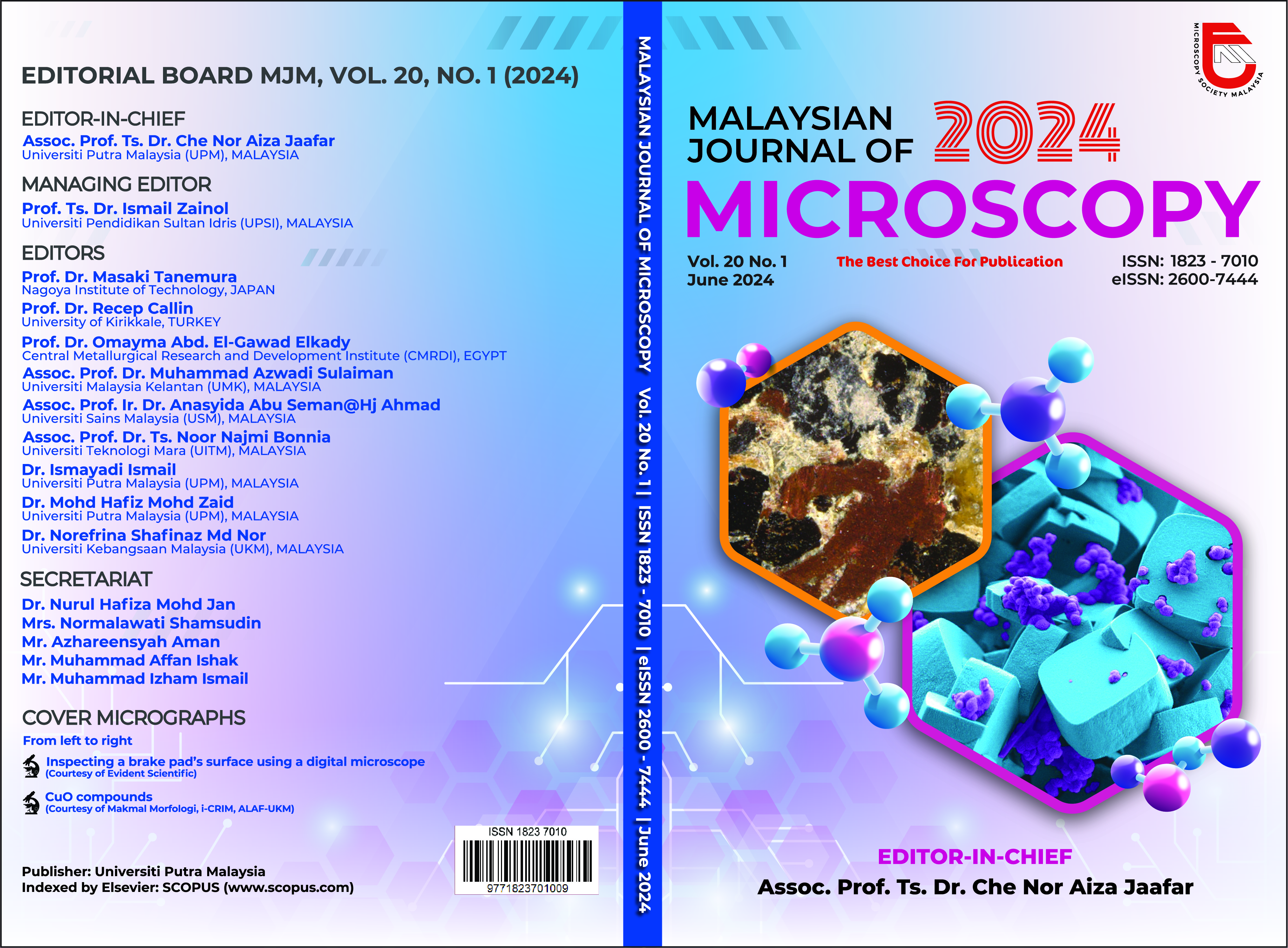MICROSTRUCTURAL EVOLUTION AND HARDNESS PROPERTIES OF Si-MODIFIED ALUMINIDE COATING ON 304 STAINLESS STEEL VIA SLURRY ALUMINIZING: EFFECT OF ALUMINIZING TEMPERATURES
Abstract
Surface modification of austenitic steel with a Si-modified aluminide coating enhances its lifespan by improving resistance to corrosion, oxidation, and high-temperature strength. To achieve this, a slurry composed of silicon, alumina, and aluminium was applied on the surface of 304 stainless steel (304SS) substrates. The samples were subjected to aluminizing at 750 °C, 800 °C, and 850 °C for 6 hours. Microstructural analysis was carried out using a field scanning electron microscope (FESEM) equipped with energy-dispersed X-ray spectroscopy (EDX), while X-ray diffraction (XRD) was employed for phase identification. The hardness of the coating was measured using Vicker microhardness. The study revealed the presence of various binary intermetallic compounds, including Fe2Al5, Fe3Al, and FeAl, as well as ternary phases like Al3Fe2Si3 and Fe1.7Al4Si, within the coatings. The addition of silicon reduced the intermetallic compound (IMC) layer thickness by occupying vacancy sites along the crystal structure c-axis of Fe2Al5, thereby restraining the growth of this brittle IMC in favor of more ductile phases. Notably, specimens heat treated at 850 °C exhibited the highest thickness of Fe-Al IMC layers. As temperature increases, the number of voids at the interface between the aluminide layer and the steel substrate also grew. Microhardness measurement revealed that Fe2Al5, FeAl, and Fe3Al layers had a hardness value of about 850-990 HV, 570-630 HV, and 320-410 HV respectively for all the temperatures. Fe2Al5 has the lowest toughness and is confirmed to be the hardest zone in the aluminide coating. Si-modified aluminide coatings on 304 stainless steels could be considered as a material candidate for high temperature application.


